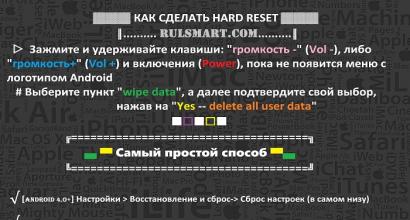Fundamentals of electronics - Kharchenko V.M. Fundamentals of Electronics Fundamentals of Electronics Kharchenko read online
Name: Basics of Electronics.
This book corresponds to the second part of the new course program “General Electrical Engineering with Fundamentals of Electronics”. It outlines the structure and operating principle of electric vacuum, gas discharge, semiconductor and photoelectronic elements, discusses electronic rectifiers, amplifiers, generators and measuring instruments, provides basic information about electronic automation elements, computers and automatic systems for students of technical schools of non-electrical specialties.
Electronics is one of the branched branches of electrical engineering, which implements knowledge (science) about the electrophysical properties and processes in semiconductors, dielectrics, vacuum, plasma, etc. when creating and using a variety of products with electronic components. On the basis of this science, the electronics industry is organized with automated technological processes and the operation of electronic equipment is carried out.
Electronic equipment products include industrial installations with electronic machines and devices for the national economy and public utility purposes: automatic technological equipment, radio and television equipment, medical electronic devices, electronic computers, electronic heating devices, etc.
Chapter first. Electronic tubes
1.1. General information
1.2. Physical processes in vacuum tubes
1.3. Electrovacuum diode
1.4. Triodes
1.5. Tetrodes
1.6. Pentodes
1.7. Combined and special lamps
1.8. Classification and symbols of electronic tubes
Control questions
Chapter two. Gas discharge devices
2.1. Electrical discharges in a gas environment; Volt-ampere characteristics of gas-discharge devices
2.2. Classification of devices by types of gas discharges and their application
2.3. Cold cathode gas discharge devices
2.4. Gas-discharge (fluorescent) lamps
2.5. Gastrons and non-self-sustaining discharge thyratrons
2.6. Mercury valve devices
2.7. Symbols of gas-discharge devices
Control questions
Chapter three. Semiconductor devices
3.1. Electrical conductivity of semiconductors
3.2. Electron-hole transition
3.3. Semiconductor diodes
3.4. Bipolar transistors
3.5. Field effect transistors
3.6. Thyristors
Control questions
Chapter Four. Photoelectric radiation receivers
4.1. General information about photoconductivity
4 2. Vacuum and gas-discharge photocells
4.3. Photomultiplier tubes
4.4. Photoresistors
4.5. Photovoltaic radiation receivers
Control questions
Chapter five. Electronic rectifiers
5.1. Basic information
5.2. Half-wave rectification
5.3. Full-wave single-phase rectifiers
5.4. Three-phase rectifiers
5.5. Anti-aliasing filters
5.6. Controlled rectifiers
Control questions
Chapter six. Electronic amplifiers
6.1. General information
6.2. Amplifier performance indicators
6.3. Model of the amplifier stage. The principle of amplification. Operating modes of amplifying elements
6.4. Pre-amplification stages. Interstage connections. Composite transistors
6.5. Power supply for amplifier stages. Stabilization of amplifier operating modes. Feedbacks
6.6. Final (output) stages
6.7. DC Amplifiers
6.8. Selective amplifiers
Control questions
Chapter seven. Electronic generators and measuring instruments
7.1. General information
7.2. Sine Wave Generators
7.3. Square voltage generators
7.4. Ramp voltage generators
7.5. Electronic analog (pointer) instruments
7.6. Electronic digital voltmeters
7.7. Electronic oscilloscope
7.8. Basic blocks of an oscilloscope
7.9. Oscilloscopes in experimental research
Control questions
Chapter eight. Elements of automation and computer technology
8.1. Electrical contact relays
8.2. Electronic contact relays
8.3. Logic elements
8.4. Triggers
8.5. Pulse counters
8.6. Encryptors and decryptors
8.7. Signal distributors
8.8. Registers
Control questions
Chapter Nine. Integrated circuits
9.1. General information
9.2. Semiconductor, film and hybrid integrated circuits
9.3. Active elements of integrated circuits
9.4. Passive elements of microcircuits
9.5. Digital integrated circuits
9.6. Analog integrated circuits
9.7. Functional classification of ICs. Symbol, types of housings
Chapter ten. Electronic computers
10.1. General information about computer technology. Types of computers
10.2. Composition of a digital computer and interaction of its parts
10.3. Number systems and operations on numbers. Coding. Presentation of information in a computer
10.4. Information input and output devices
10.5. Computer memory devices
10.6. Processors
10.7. Concept of programming
Control questions
Chapter Eleven. Electronic devices in automatic systems
11.1. General information about automatic systems
11.2. Structure of automatic control systems
11.3. ASR performance indicators
11.4. Nonlinear ASR
11.5. Adaptive ACP
11.6. Automated control systems
11.7. Numerically controlled machine
11.8. Works (automatic manipulators)
11.9. ACS of the second and third hierarchical levels
11.10. Telemechanical systems
11.11. Frequency and time division systems
11.12. Reliability problems in electronics
Control questions
Bibliography
Alphabetical index
Download the e-book for free in a convenient format, watch and read:
Download the book Fundamentals of Electronics - Kharchenko V.M. - fileskachat.com, fast and free download.
Introduction
Chapter first. Electronic tubes
1.1. General information
1.2. Physical processes in vacuum tubes
1.3. Electrovacuum diode
1.4. Triodes
1.5. Tetrodes
1.6. Pentodes
1.7. Combined and special lamps
1.8. Classification and symbols of electronic tubes
Control questions
Chapter two. Gas discharge devices
2.1. Electrical discharges in a gas environment; Volt-ampere characteristics of gas-discharge devices
2.2. Classification of devices by types of gas discharges and their application
2.3. Cold cathode gas discharge devices
2.4. Gas-discharge (fluorescent) lamps
2.5. Gastrons and non-self-sustaining discharge thyratrons
2.6. Mercury valve devices
2.7. Symbols of gas-discharge devices
Control questions
Chapter three. Semiconductor devices
3.1. Electrical conductivity of semiconductors
3.2. Electron-hole transition
3.3. Semiconductor diodes
3.4. Bipolar transistors
3.5. Field effect transistors
3.6. Thyristors
Control questions
Chapter Four. Photoelectric radiation receivers
4.1. General information about photoconductivity
4 2. Vacuum and gas-discharge photocells
4.3. Photomultiplier tubes
4.4. Photoresistors
4.5. Photovoltaic radiation receivers
Control questions
Chapter five. Electronic rectifiers
5.1. Basic information
5.2. Half-wave rectification
5.3. Full-wave single-phase rectifiers
5.4. Three-phase rectifiers
5.5. Anti-aliasing filters
5.6. Controlled rectifiers
Control questions
Chapter six. Electronic amplifiers
6.1. General information
6.2. Amplifier performance indicators
6.3. Model of the amplifier stage. The principle of amplification. Operating modes of amplifying elements
6.4. Pre-amplification stages. Interstage connections. Composite transistors
6.5. Power supply for amplifier stages. Stabilization of amplifier operating modes. Feedbacks
6.6. Final (output) stages
6.7. DC Amplifiers
6.8. Selective amplifiers
Control questions
Chapter seven. Electronic generators and measuring instruments
7.1. General information
7.2. Sine Wave Generators
7.3. Square voltage generators
7.4. Ramp voltage generators
7.5. Electronic analog (pointer) instruments
7.6. Electronic digital voltmeters
7.7. Electronic oscilloscope
7.8. Basic blocks of an oscilloscope
7.9. Oscilloscopes in experimental research
Control questions
Chapter eight. Elements of automation and computer technology
8.1. Electrical contact relays
8.2. Electronic contact relays
8.3. Logic elements
8.4. Triggers
8.5. Pulse counters
8.6. Encryptors and decryptors
8.7. Signal distributors
8.8. Registers
Control questions
Chapter Nine. Integrated circuits
9.1. General information
9.2. Semiconductor, film and hybrid integrated circuits
9.3. Active elements of integrated circuits
9.4. Passive elements of microcircuits
9.5. Digital integrated circuits
9.6. Analog integrated circuits
9.7. Functional classification of ICs. Symbol, types of housings
Chapter ten. Electronic computers
10.1. General information about computer technology. Types of computers
10.2. Composition of a digital computer and interaction of its parts
10.3. Number systems and operations on numbers. Coding. Presentation of information in a computer
10.4. Information input and output devices
10.5. Computer memory devices
10.6. Processors
10.7. Concept of programming
Control questions
Chapter Eleven. Electronic devices in automatic systems
11.1. General information about automatic systems
11.2. Structure of automatic control systems
11.3. ASR performance indicators
11.4. Nonlinear ASR
11.5. Adaptive ACP
11.6. Automated control systems
11.7. Numerically controlled machine
11.8. Works (automatic manipulators)
11.9. ACS of the second and third hierarchical levels
11.10. Telemechanical systems
11.11. Frequency and time division systems
11.12. Reliability problems in electronics
Control questions
Bibliography
Alphabetical index
Textbook for technical schools. - Moscow: Energoizdat, 1982. - 352 pp.: ill. This book corresponds to the second part of the new course program "General Electrical Engineering with Fundamentals of Electronics." It outlines the structure and operating principle of electric vacuum, gas-discharge, semiconductor and photoelectronic elements, discusses electronic rectifiers, amplifiers, generators and measuring instruments, and provides basic information about electronic elements of automation, computers and automatic systems.
For students of technical schools of non-electrical specialties. Preface
IntroductionElectronic tubes
General information.
Physical processes in electron tubes.
Electrovacuum diode.
Triodes.
Tetrodes.
Pentodes.
Combined and special lamps.
Classification and symbols of electronic tubes. Gas discharge devices
Electrical discharges in a gas environment; Volt-ampere characteristics of gas-discharge devices.
Classification of devices by types of gas discharges and their application.
Gas discharge devices with cold cathode.
Gas-discharge (fluorescent) lamps.
Gastrons and thyratrons of non-self-sustaining discharge.
Mercury valve devices.
Symbols of gas-discharge devices. Semiconductor devices
Electrical conductivity of semiconductors.
Electron-hole transition.
Semiconductor diodes.
Bipolar transistors.
Field effect transistors.
Thyristors. Photoelectric radiation receivers
General information about photoconductivity.
Vacuum and gas-discharge photocells.
Photomultipliers.
Photoresistors.
Photovoltaic radiation receivers. Electronic rectifiers
Basic information.
Half-wave rectification.
Full-wave single-phase rectifiers.
Three-phase rectifiers.
Anti-aliasing filters.
Controlled rectifiers. Electronic amplifiers
General information.
Amplifier performance indicators.
Model of the amplifier stage. The principle of amplification. Operating modes of amplifying elements.
Pre-amplification stages. Interstage connections. Composite transistors.
Power supply for amplifier stages. Stabilization of amplifier operating modes. Feedback.
Final (output) stages.
DC amplifiers.
Selective amplifiers. Electronic generators and measuring instruments
General information.
Generators of sinusoidal oscillations.
Rectangular voltage generators.
Ramp voltage generators.
Electronic analog (pointer) instruments.
Electronic digital voltmeters.
Electronic oscilloscope.
Basic blocks of an oscilloscope.
Oscilloscopes in experimental research. Elements of automation and computer technology
Electrical contact relays.
Electronic contact relays.
Logical elements.
Triggers.
Pulse counters.
Encryptors and decryptors.
Signal distributors.
Registers. Integrated circuits
General information.
Semiconductor, film and hybrid integrated circuits.
Active elements of integrated circuits.
Passive elements of microcircuits.
Digital integrated circuits.
Analog integrated circuits.
Functional classification of ICs. Symbol, types of housings. Electronic computers
General information about computer technology. Types of computers.
The composition of a digital computer and the interaction of its parts.
Number systems and operations on numbers. Coding. Presentation of information in a computer.
Information input and output devices.
Computer memory devices.
Processors.
Concept of programming. Electronic devices in automatic systems
General information about automatic systems.
Structure of automatic control systems.
ASR performance indicators.
Nonlinear ASR.
Adaptive ACP.
Automated control systems.
Numerically controlled machine.
Works (automatic manipulators).
ACS of the second and third hierarchical levels.
Telemechanical systems.
Systems with frequency and time division of channels.
Reliability problems in electronics. Bibliography
Alphabetical index


